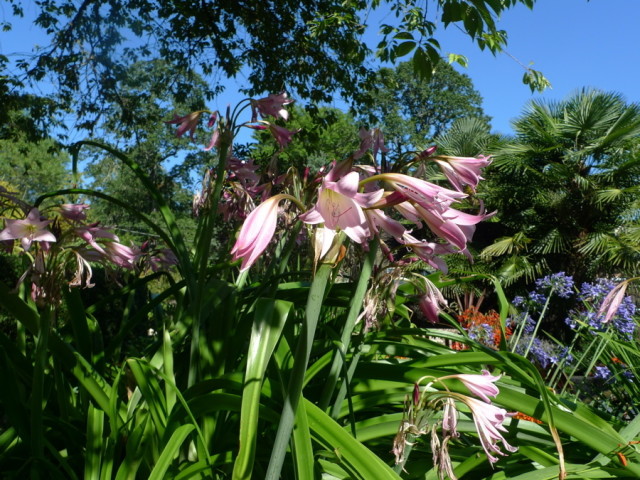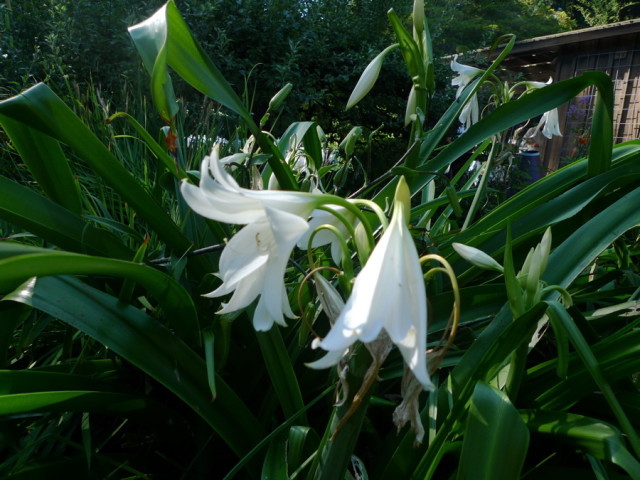Crinum x powellii

Crinum x powellii at Neil Matteucci and Norm Kalbfleisch’s Woodland Way Garden
Common in the Southern US, tropical-looking Crinum lilies (technically, not really lilies but rather Amaryllis-relatives) have been thriving in Portland-area gardens for many years. There are myriad hybrids and selections in various flower colors, shapes and sizes: one of the most readily available, cold-hardy and easiest to grow is Crinum x powellii.
Crinum x powellii is a hybrid developed in the mid-19th century using Crinum bulbispermum and Crinum mooreii , two South African native species. The large, rodent-proof (hark, Willamette Valley gardeners!) bulbs produce up to 15 trumpet-shaped, pink or white summertime flowers with a wonderful fragrance. The strappy green foliage takes up some real estate in the garden so give Crinum x powellii plenty of space to grow – it can easily take up a 4×4′ space in five years and can reach about 3-4’ tall in flower. (The foliage on a large clump can be a bit over 2’ high and quite a bit wider.)

A white form of Crinum x powellii at Neil and Norm’s. The tags are long gone but chances are, it’s the common white form, C. x powellii ‘Albus’
Crinum appreciate rich, moist soil but seem to thrive just as well in a dry border in summer. They are tough old things, doing well in full sun or partial shade. But they do require a little patience: they can take several years (2-3) after planting to begin flowering. Think of them as heirloom plants, as they do in the South.
Also know that the hefty bulbs should be planted with their necks sticking out: plant 2/3 below ground and 1/3 above.
Most Crinum x powellii are cold hardy in the Portland area (to USDA Zone 7), but occasionally there are seed-grown selections that are less hardy than others so it’s best to look for progeny from a plant that has been locally tested or comes from a reliable supplier.
Crinums of all varieties may be found at several nurseries: look here for a consolidation of sources for a variety of species and hybrids, including the reliable Crinum x powellii.
